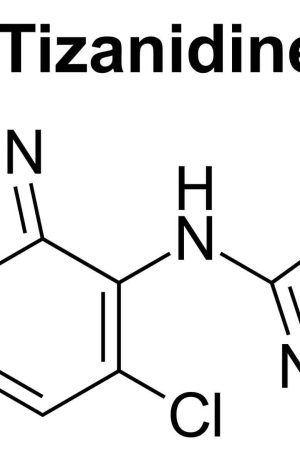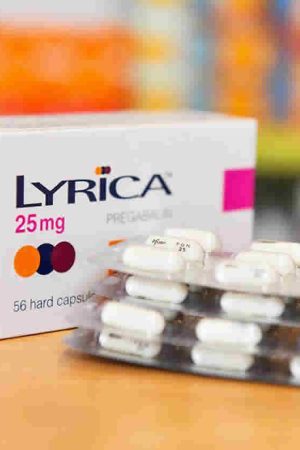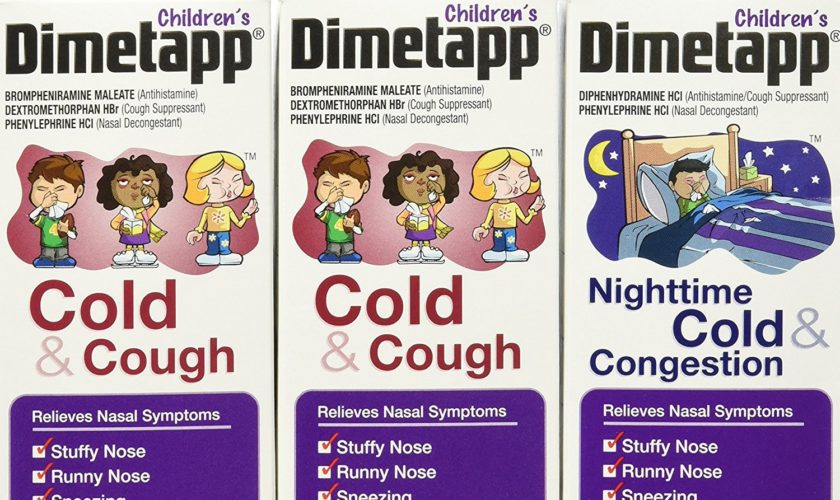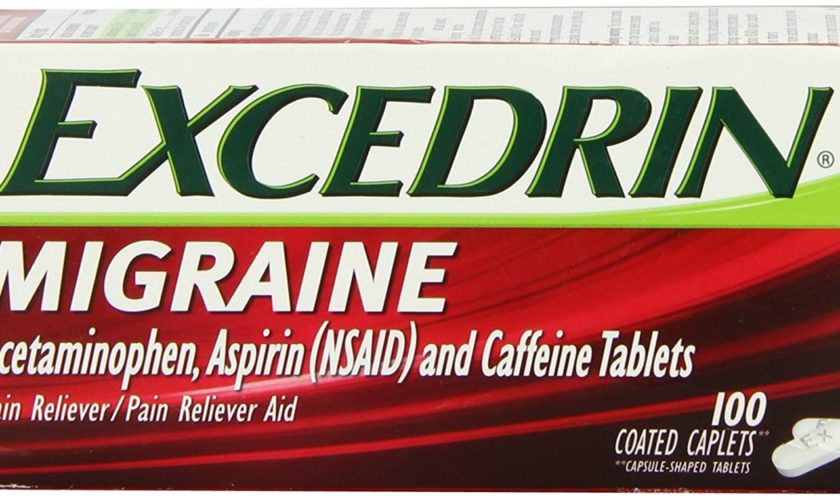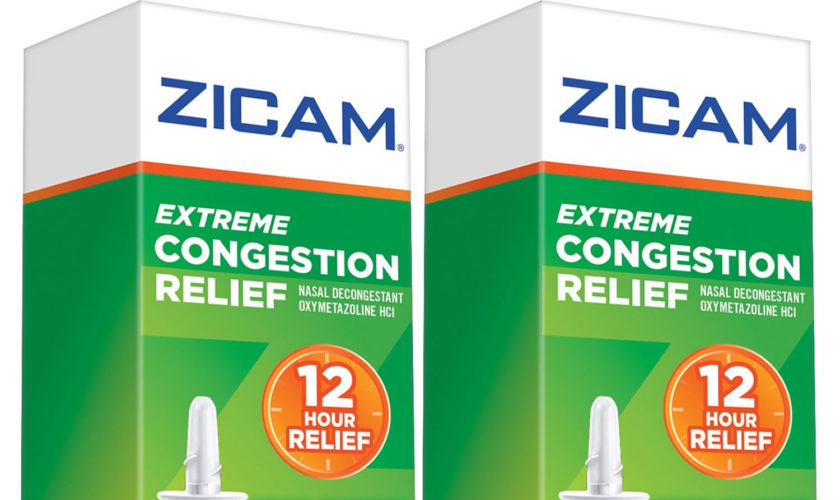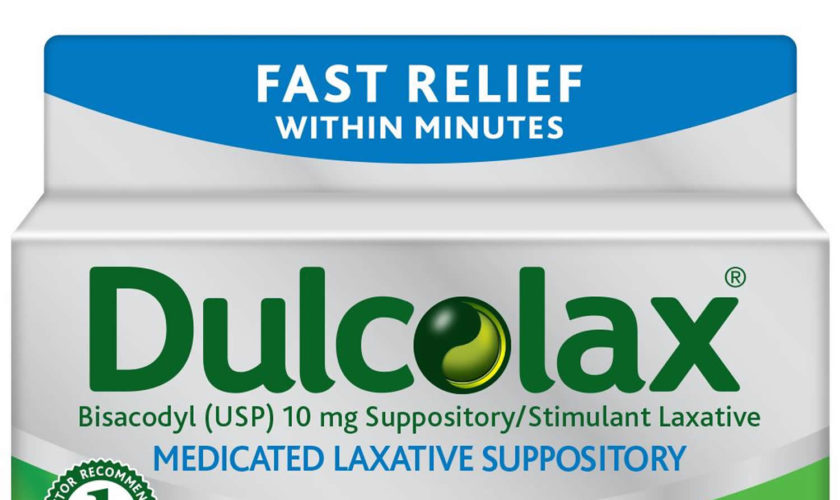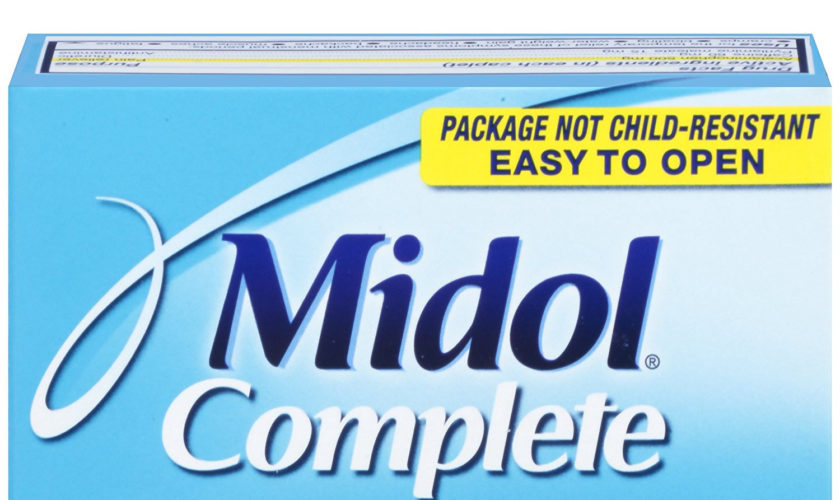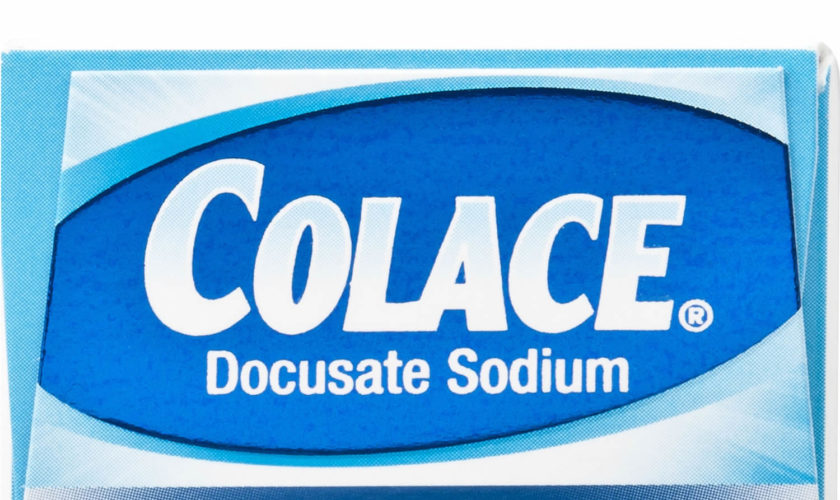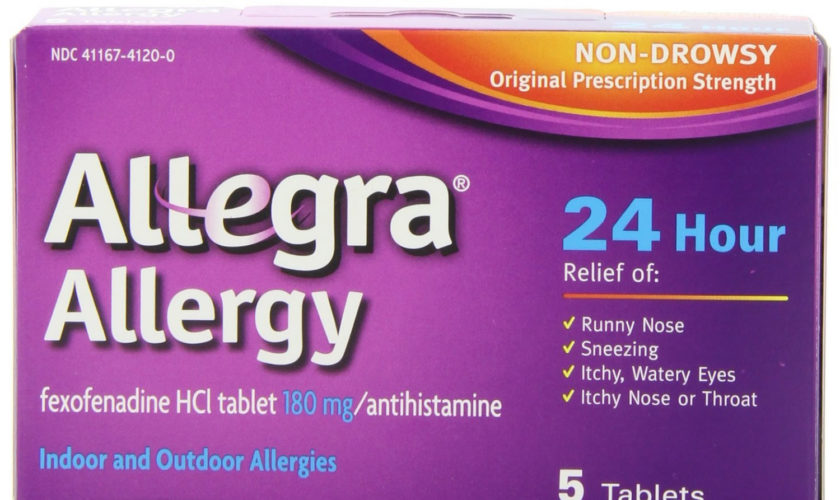What is Dimetapp
Dimetapp contains the active ingredients Brompheniramine [Antihistamine] and Pseudoephedrine [Nasal decongestant].
Dimetapp Elixir, Liquid, and Syrup medicine is used:
- to treat nose stuffiness.
- to ease allergy signs.
Other Dimetapp brands contain different active ingredients depending on their uses.
What is brompheniramine?
Brompheniramine is an antihistamine that reduces the effects of natural chemical histamine in the body. Histamine can produce symptoms of sneezing, itching, watery eyes, and runny nose. Brompheniramine is used to treat runny nose, sneezing, itching, and watery eyes caused by allergies, the common cold, or the flu.
Brompheniramine Important Information
You should not use this medication if you have severe constipation, a blockage in your stomach or intestines, or if you are unable to urinate.
Do not use this medicine if you have untreated or uncontrolled diseases such as glaucoma, asthma or COPD, heart disease, or a thyroid disorder.
Do not give this medication to a child younger than 4 years old. Always ask a doctor before giving a cough or cold medicine to a child. Death can occur from the misuse of cough and cold medicines in very young children.
Before taking Brompheniramine
You should not use this medication if you have severe constipation, a blockage in your stomach or intestines, or if you are unable to urinate.
Do not use this medicine if you have untreated or uncontrolled diseases such as glaucoma, asthma or COPD, heart disease, or a thyroid disorder.
Ask a doctor or pharmacist if it is safe for you to take brompheniramine if you have:
- a blockage in your digestive tract (stomach or intestines), a colostomy or ileostomy;
- liver or kidney disease;
- cough with mucus, or cough caused by smoking, emphysema, or chronic bronchitis;
- enlarged prostate or urination problems; or
- if you take potassium.
FDA pregnancy category C: It is not known whether brompheniramine will harm an unborn baby. Do not use this medicine without medical advice if you are pregnant.
Brompheniramine may pass into breast milk and may harm a nursing baby. Antihistamines may also slow breast milk production. Do not use this medicine without medical advice if you are breast-feeding a baby.
Artificially sweetened cold medicine may contain phenylalanine. If you have phenylketonuria (PKU), check the medication label to see if the product contains phenylalanine.
What should I avoid while taking brompheniramine?
This medicine may cause blurred vision or impair your thinking or reactions. Be careful if you drive or do anything that requires you to be alert and able to see clearly.
Drinking alcohol can increase certain side effects of brompheniramine.
Ask a doctor or pharmacist before using any other cold, cough, allergy, or sleep medicine. Antihistamines are contained in many combination medicines. Taking certain products together can cause you to get too much of a certain drug. Check the label to see if a medicine contains an antihistamine.
Avoid becoming overheated or dehydrated during exercise and in hot weather. Brompheniramine can decrease sweating and you may be more prone to heat stroke.
Brompheniramine side effects
Side effects of brompheniramine
All drugs may cause side effects. However, many people have no side effects or only have minor side effects. Call your doctor or get medical help if any of these side effects or any other side effects bother you or do not go away:
- Feeling sleepy.
- Feeling nervous and excitable.
- Dry mouth.
- Dry nose.
Get emergency medical help if you have any of these signs of an allergic reaction:
- hives;
- difficult breathing;
- swelling of your face, lips, tongue, or throat.
Stop using brompheniramine and call your doctor at once if you have a serious side effect such as:
- fast or uneven heart rate;
- mood changes;
- tremor, seizure (convulsions);
- easy bruising or bleeding, unusual weakness;
- feeling short of breath; or
- urinating less than usual or not at all.
Less serious side effects may include:
- dizziness, drowsiness;
- dry mouth, nose, or throat;
- constipation;
- blurred vision; or
- feeling nervous or restless.
Nervous system
Nervous system side effects have included central nervous system (CNS) depression, resulting in drowsiness and sedation in nearly 50% of patients treated. This effect has often been transient and ceased with continued use. Motor skills have be impaired and patients should be advised to avoid tasks which require attention. Patients should also avoid concomitant use with alcohol and other sedative-hypnotic drugs. Dyskinesias have rarely been reported following chronic use of brompheniramine.
A few cases of dyskinesias and tremors, often of the face, have been reported in patients whose chronic use of brompheniramine extended over a period of up to 10 years. Some of these cases were only partially relieved by discontinuation of the drug. Haloperidol was successful in relieving symptoms in these patients. Spasmodic torticollis has been reported in a child given brompheniramine over an eight month period.
Gastrointestinal
Gastrointestinal side effects have include nausea, dry mouth and constipation.
Cardiovascular
Cardiovascular effects of brompheniramine have included hypotension, tachycardia, and palpitations.
Ocular
Ocular side effects have included blurred vision, diplopia, and dry eyes due to anticholinergic effects.
Genitourinary
Genitourinary side effects have included dysuria, urinary hesitancy, decrease in urine flow, and, in rare cases, acute urinary retention.
Hematologic
Hematologic side effects have included rare cases of hemolytic anemia, thrombocytopenia, and agranulocytosis.
What are some side effects that I need to call my doctor about right away?
Even though it may be rare, some people may have very bad and sometimes deadly side effects when taking a drug.
Tell your doctor or get medical help right away if you have any of the following signs or symptoms that may be related to a very bad side effect:
- Signs of an allergic reaction, like rash; hives; itching; red, swollen, blistered, or peeling skin with or without fever; wheezing; tightness in the chest or throat; trouble breathing, swallowing, or talking; unusual hoarseness; or swelling of the mouth, face, lips, tongue, or throat.
- Chest pain or pressure or a fast heartbeat.
- A heartbeat that does not feel normal.
- Shortness of breath.
- Change in balance.
- Change in eyesight.
- Mood changes.
- Hallucinations (seeing or hearing things that are not there).
- Very bad sore throat.
- Fever or chills.
- Trouble passing urine.
- Any unexplained bruising or bleeding.
- Very bad dizziness or passing out.
- Feeling very tired or weak.
- Feeling confused.
- Restlessness.
- Shakiness.
- Seizures.
What is pseudoephedrine?
Pseudoephedrine is a decongestant that shrinks blood vessels in the nasal passages. Dilated blood vessels can cause nasal congestion (stuffy nose).
Pseudoephedrine is used to treat nasal and sinus congestion, or congestion of the tubes that drain fluid from your inner ears, called the eustachian tubes.
Pseudoephedrine Important information
Do not give pseudoephedrine to a child younger than 4 years old. Always ask a doctor before giving a cough or cold medicine to a child. Death can occur from the misuse of cough and cold medicines in very young children.
Ask a doctor or pharmacist before using any other cough or cold medicine. Pseudoephedrine or other decongestants are contained in many combination medicines. Taking certain products together can cause you to get too much of a certain drug. Check the label to see if a medicine contains pseudoephedrine or a decongestant. Do not use pseudoephedrine if you have used a MAO inhibitor such as furazolidone (Furoxone), isocarboxazid (Marplan), phenelzine (Nardil), rasagiline (Azilect), selegiline (Eldepryl, Emsam, Zelapar), or tranylcypromine (Parnate) in the last 14 days. A dangerous drug interaction could occur, leading to serious side effects.
Before taking pseudoephedrine
Do not use pseudoephedrine if you have used an MAO inhibitor such as furazolidone (Furoxone), isocarboxazid (Marplan), phenelzine (Nardil), rasagiline (Azilect), selegiline (Eldepryl, Emsam, Zelapar), or tranylcypromine (Parnate) in the last 14 days. A dangerous drug interaction could occur, leading to serious side effects. Do not use this medication if you are allergic to pseudoephedrine or to other decongestants, diet pills, stimulants, or ADHD medications.
Ask a doctor or pharmacist if it is safe for you to take pseudoephedrine if you have:
- heart disease or high blood pressure;
- diabetes; or
- a thyroid disorder.
- Artificially sweetened liquid cold medicine may contain phenylalanine. If you have phenylketonuria (PKU), check the medication label to see if the product contains phenylalanine.
FDA pregnancy category C: It is not known whether pseudoephedrine will harm an unborn baby. Tell your doctor if you are pregnant or plan to become pregnant while using this medication. Pseudoephedrine can pass into breast milk and may harm a nursing baby. Do not use pseudoephedrine without telling your doctor if you are breast-feeding a baby.
Drugs which have been taken by only a limited number of pregnant women and women of childbearing age, without an increase in the frequency of malformation or other direct or indirect harmful effects on the human fetus having been observed. Studies in animals are inadequate or may be lacking, but available data show no evidence of an increased occurrence of fetal damage.
This drug should not be used during pregnancy unless the benefit outweighs the risk to the fetus.
Pseudoephedrine Pregnancy and Breastfeeding Warnings
Pseudoephedrine Pregnancy Warnings
Doses of 35 to 50 times the human daily dose to rabbits and rats, respectively, have not produced teratogenic effects. A case-controlled surveillance study reported an elevated relative risk (3.2) of gastroschisis with first-trimester use in 76 cases. The authors hypothesized vascular disruption as the etiology of gastroschisis. In a review of 229,101 deliveries to Michigan Medicaid patients, 940 first-trimester exposures to this drug were recorded and 1919 exposures anytime during pregnancy. A total of 37 birth defects were reported with first trimester exposure (40 expected) and included (observed/expected) 3/9 cardiovascular defects, 2 oral clefts, and 3/2 polydactyly. These researchers reviewed nine cases of abdominal wall defects in the 1980 through 1983 Medicaid data. Seven of the nine cases occurred in 3752 woman who had taken pseudoephedrine for a relative risk of 1.8. There are no adequate and well controlled studies in pregnant women.
Pseudoephedrine Breastfeeding Warnings
Based on limited data, it has been estimated that 0.5% to 0.7% of the mother’s dose is excreted into breast milk over 24 hours. In 1 study, irritability was reported in up to 20% of infants. A 24% mean decrease in milk production was observed after a single 60 mg dose in 8 nursing mothers.
Caution is recommended
Excreted into human milk: Yes
Comments:
- Single doses are unlikely to harm a nursing infant, but may cause irritability or disturbed sleep.
- Repeated doses may interfere with lactation in mothers who are having difficulties producing sufficient milk or in those whose lactation is not well established.
What should I avoid whilst taking pseudoephedrine?
Avoid taking pseudoephedrine if you also take diet pills, caffeine pills, or other stimulants (such as ADHD medications). Taking a stimulant together with a decongestant can increase your risk of unpleasant side effects.
Ask a doctor or pharmacist before using any other cough or cold medicine. Pseudoephedrine or other decongestants are contained in many combination medicines. Taking certain products together can cause you to get too much of a certain drug. Check the label to see if a medicine contains pseudoephedrine or a decongestant.
Pseudoephedrine side effects
Some side effects of pseudoephedrine may occur that usually do not need medical attention. These side effects may go away during treatment as your body adjusts to the medicine. Also, your health care professional may be able to tell you about ways to prevent or reduce some of these side effects. Check with your health care professional if any of the following side effects continue or are bothersome or if you have any questions about them.
The most commonly reported adverse effects have included cardiovascular and (e.g. elevated blood pressure, tachycardia, or arrhythmias), CNS stimulation (e.g. restlessness, insomnia, anxiety, tremors, and rarely hallucinations), skin rashes, and urinary retention.
More common side effects:
- nervousness
- restlessness
- trouble in sleeping
Less common side effects:
- difficult or painful urination
- dizziness or light-headedness
- fast or pounding heartbeat
- headache
- increased sweating
- nausea or vomiting
- trembling
- unusual paleness
- weakness
Cardiovascular
- Frequency not reported: Tachycardia, palpitations, arrhythmia, hypertension, impaired circulation to the extremities
Nervous system
- Frequency not reported: Headache, tremor
Gastrointestinal
- Frequency not reported: Dry mouth, nausea, vomiting
Hypersensitivity
- Frequency not reported: Hypersensitivity reactions including cross-sensitivity with other sympathomimetic
Psychiatric
- Rare (less than 0.1%): Hallucinations
- Frequency not reported: Restlessness, insomnia, sleep disturbances, anxiety, excitability
Genitourinary
- Frequency not reported: Urinary retention, especially in men with prostatic enlargement
Ocular
- Frequency not reported: Angle-closure glaucoma
Dermatologic
- Frequency not reported: Skin rashes, fixed drug eruption in the form of erythematous nodular patches
Other side effects
- Post marketing reports: False-positive amphetamine immunoassay
- False-positives can occur far below the published threshold indicating that cross-reactivity in human specimens is sometimes greater than the limits reported.
Get emergency medical help if you have any of these signs of an allergic reaction to pseudoephedrine:
- hives;
- difficulty breathing;
- swelling of your face, lips, tongue, or throat.
Stop using pseudoephedrine and call your doctor at once if you have a serious side effect such as:
- fast, pounding, or uneven heartbeat;
- severe dizziness or anxiety;
- easy bruising or bleeding, unusual weakness, fever, chills, body aches, flu symptoms; or
- dangerously high blood pressure (severe headache, blurred vision, ringing in your ears, anxiety, confusion, chest pain, trouble breathing, uneven heart rate, seizure).
Less serious pseudoephedrine side effects may include:
- loss of appetite;
- warmth, tingling, or redness under your skin;
- feeling restless or excited (especially in children);
- sleep problems (insomnia); or
- skin rash or itching.
Check with your doctor as soon as possible if any of the following side effects occur while taking pseudoephedrine:
Rare side effects – more common with high doses:
- Convulsions (seizures)
- hallucinations (seeing, hearing, or feeling things that are not there)
- irregular or slow heartbeat
- shortness of breath or troubled breathing
Symptoms of pseudoephedrine overdose:
- Convulsions (seizures)
- fast breathing
- hallucinations (seeing, hearing, or feeling things that are not there)
- increase in blood pressure
- irregular heartbeat (continuing)
- shortness of breath or troubled breathing (severe or continuing)
- slow or fast heartbeat (severe or continuing)
- unusual nervousness, restlessness, or excitement
What do I need to tell my doctor before I take Dimetapp?
- If you have an allergy to brompheniramine, pseudoephedrine, or any other part of Dimetapp (brompheniramine and pseudoephedrine elixir, liquid, and syrup).
- If you are allergic to any drugs like this one, any other drugs, foods, or other substances. Tell your doctor about the allergy and what signs you had, like rash; hives; itching; shortness of breath; wheezing; cough; swelling of face, lips, tongue, or throat; or any other signs.
- If you have taken certain drugs used for low mood (depression) like isocarboxazid, phenelzine, or tranylcypromine or drugs used for Parkinson’s disease like selegiline or rasagiline in the last 14 days. Taking Dimetapp (brompheniramine and pseudoephedrine elixir, liquid, and syrup) within 14 days of those drugs can cause very bad high blood pressure.
This is not a list of all drugs or health problems that interact with Dimetapp (brompheniramine and pseudoephedrine elixir, liquid, and syrup).
Tell your doctor and pharmacist about all of your drugs (prescription or OTC, natural products, vitamins) and health problems. You must check to make sure that it is safe for you to take Dimetapp (brompheniramine and pseudoephedrine elixir, liquid, and syrup) with all of your drugs and health problems. Do not start, stop, or change the dose of any drug without checking with your doctor.
What are some things I need to know or do while I take Dimetapp?
- Tell all of your health care providers that you take Dimetapp (brompheniramine and pseudoephedrine elixir, liquid, and syrup). This includes your doctors, nurses, pharmacists, and dentists.
- Do not take more than what your doctor told you to take. Taking more than you are told may raise your chance of very bad side effects.
- Do not take Dimetapp (brompheniramine and pseudoephedrine elixir, liquid, and syrup) for longer than you were told by your doctor.
- Avoid driving and doing other tasks or actions that call for you to be alert until you see how Dimetapp (brompheniramine and pseudoephedrine elixir, liquid, and syrup) affects you.
- Avoid drinking alcohol while taking Dimetapp (brompheniramine and pseudoephedrine elixir, liquid, and syrup).
- Talk with your doctor before you use other drugs and natural products that slow your actions.
- Use with care in children. Talk with the doctor.
- Tell your doctor if you are pregnant or plan on getting pregnant. You will need to talk about the benefits and risks of using Dimetapp (brompheniramine and pseudoephedrine elixir, liquid, and syrup) while you are pregnant.
- Tell your doctor if you are breast-feeding. You will need to talk about any risks to your baby.
How is Dimetapp best taken?
Use Dimetapp (brompheniramine and pseudoephedrine elixir, liquid, and syrup) as ordered by your doctor. Read all information given to you. Follow all instructions closely.
- Take with or without food. Take with food if it causes an upset stomach.
- Measure liquid doses carefully. Use the measuring device that comes with Dimetapp (brompheniramine and pseudoephedrine elixir, liquid, and syrup). If there is none, ask the pharmacist for a device to measure Dimetapp (brompheniramine and pseudoephedrine elixir, liquid, and syrup).
What do I do if I miss a dose?
- If you take Dimetapp (brompheniramine and pseudoephedrine elixir, liquid, and syrup) on a regular basis, take a missed dose as soon as you think about it.
- If it is close to the time for your next dose, skip the missed dose and go back to your normal time.
- Do not take 2 doses at the same time or extra doses.
- Many times Dimetapp (brompheniramine and pseudoephedrine elixir, liquid, and syrup) is taken on an as needed basis. Do not take more often than told by the doctor.
What are some side effects that I need to call my doctor about right away?
WARNING/CAUTION: Even though it may be rare, some people may have very bad and sometimes deadly side effects when taking a drug. Tell your doctor or get medical help right away if you have any of the following signs or symptoms that may be related to a very bad side effect:
Signs of an allergic reaction, like rash; hives; itching; red, swollen, blistered, or peeling skin with or without fever; wheezing; tightness in the chest or throat; trouble breathing, swallowing, or talking; unusual hoarseness; or swelling of the mouth, face, lips, tongue, or throat.
What are some other side effects of Dimetapp?
All drugs may cause side effects. However, many people have no side effects or only have minor side effects. Call your doctor or get medical help if any of these side effects or any other side effects bother you or do not go away:
- Dizziness.
- Feeling nervous and excitable.
- Not able to sleep.
- Feeling sleepy.
These are not all of the side effects that may occur. If you have questions about side effects, call your doctor. Call your doctor for medical advice about side effects.
If Dimetapp OVERDOSE is suspected
In case of overdose, call the poison control helpline at 1-800-222-1222. Information is also available online at https://www.poisonhelp.org/help. This is a free and confidential service. All local poison control centers in the United States use this national number. You should call if you have any questions about poisoning or poison prevention. It does NOT need to be an emergency. You can call for any reason, 24 hours a day, 7 days a week.
Be ready to tell or show what was taken, how much, and when it happened.
Dimetapp Formula Finder
Children’s Dimetapp Cold and Allergy
- Active ingredients (in each 10 ml): Brompheniramine maleate USP 2 mg [Antihistamine] + Phenylephrine HCl USP 5 mg [Nasal decongestant]
- Inactive ingredients: anhydrous citric acid, artificial flavor, FD&C blue no. 1, FD&C red no. 40, glycerin, propylene glycol, purified water, sodium benzoate, sodium citrate, sorbitol solution, sucralose
Other information
- each 10 ml contains: sodium 6 mg
- store at 20-25°C (68-77°F)
Children’s Dimetapp Cold and Allergy Uses:
- Temporarily relieves nasal congestion due to the common cold, hay fever or other upper respiratory allergies
- Temporarily relieves these symptoms due to hay fever (allergic rhinitis):
- runny nose
- sneezing
- itchy, watery eyes
- itching of the nose or throat
- Temporarily restores freer breathing through the nose
Children’s Dimetapp Cold and Allergy Warnings
Do NOT use
- to sedate a child or to make a child sleepy
- if you are now taking a prescription monoamine oxidase inhibitor (MAOI) (certain drugs for depression, psychiatric, or emotional conditions, or Parkinson’s disease), or for 2 weeks after stopping the MAOI drug. If you do not know if your prescription drug contains an MAOI, ask a doctor or pharmacist before taking this product.
Ask a doctor before use if you have:
- heart disease
- high blood pressure
- thyroid disease
- diabetes
- trouble urinating due to an enlarged prostate gland
- glaucoma
- a breathing problem such as emphysema, asthma, or chronic bronchitis
Ask a doctor or pharmacist before use if you are:
- taking any other oral nasal decongestant or stimulant
- taking sedatives or tranquilizers
When using this product:
- do not use more than directed
- drowsiness may occur
- avoid alcoholic beverages
- alcohol, sedatives, and tranquilizers may increase drowsiness
- be careful when driving a motor vehicle or operating machinery
- excitability may occur, especially in children
Stop use and ask a doctor if:
- you get nervous, dizzy, or sleepless
- symptoms do not get better within 7 days or are accompanied by fever
If pregnant or breast-feeding, ask a health professional before use.
Keep out of reach of children.
In case of overdose, get medical help or contact a Poison Control Center right away.
Children’s Dimetapp Cold and Allergy Directions of Use
- do not take more than 6 doses in any 24-hour period
- measure only with dosage cup provided
- keep dosage cup with product
- ml = milliliter
Table 1. Children’s Dimetapp Cold and Allergy Dosage Chart
| Age | Dose |
|---|---|
| Adults and children 12 years and over | 20 ml every 4 hours |
| Children 6 to under 12 years | 10 ml every 4 hours |
| Children under 6 years | Do not use |
Children’s Dimetapp Cold and Cough
- Active ingredients (in each 10 ml): Brompheniramine maleate USP 2 mg [Antihistamine] + Phenylephrine HCl USP 5 mg [Nasal decongestant] + Dextromethorphan HBr, USP 10 mg [Cough suppressant]
- Inactive ingredients: anhydrous citric acid, artificial flavor, FD&C blue no. 1, FD&C red no. 40, glycerin, propylene glycol, purified water, sodium benzoate, sodium citrate, sorbitol solution, sucralose
Other information
- each 10 ml contains: sodium 6 mg
- store at 20-25°C (68-77°F)
Children’s Dimetapp Cold and Cough Uses:
- Temporarily relieves cough due to minor throat and bronchial irritation occurring with a cold, and nasal congestion due to the common cold, hay fever or other upper respiratory allergies
- Temporarily relieves these symptoms due to hay fever (allergic rhinitis):
- runny nose
- sneezing
- itchy, watery eyes
- itching of the nose or throat
- Temporarily restores freer breathing through the nose
Children’s Dimetapp Cold and Cough Warnings
Do NOT use
- to sedate a child or to make a child sleepy
- if you are now taking a prescription monoamine oxidase inhibitor (MAOI) (certain drugs for depression, psychiatric, or emotional conditions, or Parkinson’s disease), or for 2 weeks after stopping the MAOI drug. If you do not know if your prescription drug contains an MAOI, ask a doctor or pharmacist before taking this product.
Ask a doctor before use if you have:
- heart disease
- high blood pressure
- thyroid disease
- diabetes
- trouble urinating due to an enlarged prostate gland
- glaucoma
- a breathing problem or persistent or chronic cough that lasts such as occurs with smoking, asthma, chronic bronchitis, or emphysema
Ask a doctor or pharmacist before use if you are:
- taking any other oral nasal decongestant or stimulant
- taking sedatives or tranquilizers
When using this product:
- do not use more than directed
- drowsiness may occur
- avoid alcoholic beverages
- alcohol, sedatives, and tranquilizers may increase drowsiness
- be careful when driving a motor vehicle or operating machinery
- excitability may occur, especially in children
Stop use and ask a doctor if:
- you get nervous, dizzy, or sleepless
- symptoms do not get better within 7 days or are accompanied by fever
- cough lasts more than 7 days, comes back, or is accompanied by fever, rash, or persistent headache. These could be signs of a serious condition.
If pregnant or breast-feeding, ask a health professional before use.
Keep out of reach of children.
In case of overdose, get medical help or contact a Poison Control Center right away.
Children’s Dimetapp Cold and Cough Directions of Use
- do not take more than 6 doses in any 24-hour period
- measure only with dosage cup provided
- keep dosage cup with product
- ml = milliliter
Table 2. Children’s Dimetapp Cold and Cough Dosage Chart
| Age | Dose |
|---|---|
| Adults and children 12 years and over | 20 ml every 4 hours |
| Children 6 to under 12 years | 10 ml every 4 hours |
| Children under 6 years | Do not use |
Children’s Dimetapp Long Acting Cough Plus Cold
- Active ingredients (in each 5 ml teaspoon): Chlorpheniramine maleate, USP 1.0 mg [Antihistamine] + Dextromethorphan HBr, USP 7.5 mg [Cough suppressant]
- Inactive ingredients: anhydrous citric acid, artificial flavor, FD&C blue no. 1, FD&C red no. 40, glycerin, propylene glycol, purified water, sodium benzoate, sodium citrate, sorbitol solution, sucralose
Other information
- each teaspoon contains: sodium 3 mg
- store at 20-25°C (68-77°F)
- dosage cup provided
Children’s Dimetapp Long Acting Cough Plus Cold Uses:
- Temporarily relieves cough due to minor throat and bronchial irritation as may occur with a cold
- Temporarily relieves these symptoms due to hay fever (allergic rhinitis):
- runny nose
- sneezing
- itchy, watery eyes
- itching of the nose or throat
Children’s Dimetapp Long Acting Cough Plus Cold Warnings
Do NOT use
- to sedate a child or to make a child sleepy
- if you are now taking a prescription monoamine oxidase inhibitor (MAOI) (certain drugs for depression, psychiatric, or emotional conditions, or Parkinson’s disease), or for 2 weeks after stopping the MAOI drug. If you do not know if your prescription drug contains an MAOI, ask a doctor or pharmacist before taking this product.
Ask a doctor before use if you have:
- trouble urinating due to an enlarged prostate gland
- glaucoma
- a cough that occurs with too much phlegm (mucus)
- a breathing problem or persistent or chronic cough that lasts such as occurs with smoking, asthma, chronic bronchitis, or emphysema
Ask a doctor or pharmacist before use if you are:
- taking sedatives or tranquilizers
When using this product:
- do not use more than directed
- drowsiness may occur
- avoid alcoholic beverages
- alcohol, sedatives, and tranquilizers may increase drowsiness
- be careful when driving a motor vehicle or operating machinery
- excitability may occur, especially in children
Stop use and ask a doctor if:
- cough lasts more than 7 days, comes back, or is accompanied by fever, rash, or persistent headache. These could be signs of a serious condition.
If pregnant or breast-feeding, ask a health professional before use.
Keep out of reach of children.
In case of overdose, get medical help or contact a Poison Control Center right away.
Children’s Dimetapp Long Acting Cough Plus Cold Directions of Use
- do not take more than 4 doses in any 24-hour period
- ml = milliliter
Table 3. Children’s Dimetapp Long Acting Cough Plus Cold Dosage Chart
| Age | Dose |
|---|---|
| Children 12 years and over | 4 teaspoon (20ml) every 6 hours |
| Children 6 to under 12 years | 2 teaspoon (10ml) every 6 hours |
| Children under 6 years | Do not use |
Children’s Dimetapp Multi-Symptom Cold and Flu
- Active ingredients (in each 10 ml): Acetaminophen, USP 320 mg [Pain reliever & Fever reducer] + Diphenhydramine HCl, USP 12.5 mg [Antihistamine & Cough suppressant] + Phenylephrine HCl, USP 5 mg [Nasal decongestant]
- Inactive ingredients: anhydrous citric acid, artificial flavor, edetate disodium, FD&C red no. 40, glycerin, menthol, polyethylene glycol, propyl gallate, propylene glycol, purified water, sodium benzoate, sodium citrate, sorbitol solution, sucralose
Other information
- each 10 ml contains: sodium 7 mg
- store at 20-25°C (68-77°F)
Children’s Dimetapp Multi-Symptom Cold and Flu Uses:
- Temporarily relieves these symptoms associated with a cold, or flu:
- headache
- sore throat
- fever
- minor aches and pains
- Temporarily relieves nasal congestion, and cough due to minor throat and bronchial irritation occurring with a cold
- Temporarily relieves these symptoms due to hay fever (allergic rhinitis):
- runny nose
- sneezing
- itchy, watery eyes
- itching of the nose or throat
- Temporarily restores freer breathing through the nose
Children’s Dimetapp Multi-Symptom Cold and Flu Warnings
Liver warning
This product contains acetaminophen. Severe liver damage may occur if user takes
- more than 5 doses in any 24-hour period, which is the maximum daily amount
- with other drugs containing acetaminophen
- 3 or more alcoholic drinks every day while using this product
Sore throat warning
If sore throat is severe, persists for more than 2 days, is accompanied or followed by fever, headache, rash, nausea, or vomiting, consult a doctor promptly.
Do NOT use
- to sedate a child or to make a child sleepy
- in a child under 6 years of age
- if user is now taking a prescription monoamine oxidase inhibitor (MAOI) (certain drugs for depression, psychiatric, or emotional conditions, or Parkinson’s disease), or for 2 weeks after stopping the MAOI drug. If you do not know if your prescription drug contains an MAOI, ask a doctor or pharmacist before taking this product.
- with any other drug containing acetaminophen (prescription or nonprescription). If you are not sure whether a drug contains acetaminophen ask a doctor or pharmacist.
- with any other product containing diphenhydramine, even one used on skin
Ask a doctor before use if user has:
- liver disease
- heart disease
- high blood pressure
- thyroid disease
- diabetes
- trouble urinating due to an enlarged prostate gland
- glaucoma
- cough that occurs with too much phlegm (mucus)
- a breathing problem or chronic cough that lasts or as occurs with smoking, asthma, chronic bronchitis, or emphysema
Ask a doctor or pharmacist before use if user is:
- taking the blood thinning drug warfarin
- taking any other oral nasal decongestant or stimulant
- taking any other pain reliever/fever reducer
- taking sedatives or tranquilizers
When using this product:
- do not use more than directed
- drowsiness may occur
- avoid alcoholic beverages
- alcohol, sedatives, and tranquilizers may increase drowsiness
- be careful when driving a motor vehicle or operating machinery
- excitability may occur, especially in children
Stop use and ask a doctor if:
- user gets nervous, dizzy, or sleepless
- pain, cough, or nasal congestion gets worse or lasts more than 5 days (children) or 7 days (adults)
- fever gets worse or lasts more than 3 days
- redness or swelling is present
- cough comes back or occurs with rash or headache that lasts. These could be signs of a serious condition.
- new symptoms occur
If pregnant or breast-feeding, ask a health professional before use.
Keep out of reach of children.
In case of overdose, get medical help or contact a Poison Control Center right away. Prompt medical attention is critical for adults as well as for children, even if you do not notice any signs or symptoms.
Children’s Dimetapp Multi-Symptom Cold and Flu Directions of Use
- do not take more than 5 doses in any 24-hour period
- do not exceed recommended dosage. Taking more than the recommended dose (overdose) may cause serious liver damage.
- measure only with dosage cup provided
- keep dosage cup with product
- ml = milliliter
Table 4. Children’s Dimetapp Multi-Symptom Cold and Flu Dosage Chart
| Age | Dose |
|---|---|
| Adults and children 12 years and over | 20 ml every 4 hours |
| Children 6 to under 12 years | 10 ml every 4 hours |
| Children under 6 years | Do not use |
Children’s Dimetapp Nighttime Cold and Congestion
- Active ingredients (in each 5 ml teaspoon): Diphenhydramine HCl, USP 6.25 mg [Antihistamine & Cough suppressant] + Phenylephrine HCl, USP 2.5 mg [Nasal decongestant]
- Inactive ingredients: anhydrous citric acid, artificial flavor, FD&C blue no.1, FD&C red no. 40, glycerin, propyl gallate, propylene glycol, purified water, sodium benzoate, sodium citrate, sorbitol solution, sucralose
Other information
- each teaspoon contains: sodium 4 mg
- dosage cup provided
- store at 20-25°C (68-77°F)
Children’s Dimetapp Nighttime Cold and Congestion Uses:
- Temporarily relieves these symptoms occurring with a cold, hay fever, or other upper respiratory allergies:
- runny nose
- sneezing
- itchy, watery eyes
- itching of the nose or throat
- nasal congestion
- cough
Children’s Dimetapp Nighttime Cold and Congestion Warnings
Do NOT use
- to sedate a child or to make a child sleepy
- If you are now taking a prescription monoamine oxidase inhibitor (MAOI) (certain drugs for depression, psychiatric, or emotional conditions, or Parkinson’s disease), or for 2 weeks after stopping the MAOI drug. If you do not know if your prescription drug contains an MAOI, ask a doctor or pharmacist before taking this product.
- with any other product containing diphenhydramine, even one used on skin
Ask a doctor before use if you have:
- heart disease
- high blood pressure
- thyroid disease
- diabetes
- trouble urinating due to an enlarged prostate gland
- glaucoma
- cough that occurs with too much phlegm (mucus)
- a breathing problem or chronic cough that lasts or as occurs with smoking, asthma, chronic bronchitis, or emphysema
Ask a doctor or pharmacist before use if you are:
- taking any other oral nasal decongestant or stimulant
- taking sedatives or tranquilizers
When using this product:
- do not use more than directed
- drowsiness may occur
- avoid alcoholic beverages
- alcohol, sedatives, and tranquilizers may increase drowsiness
- be careful when driving a motor vehicle or operating machinery
- excitability may occur, especially in children
Stop use and ask a doctor if:
- you get nervous, dizzy, or sleepless
- symptoms do not get better within 7 days or are accompanied by fever
- cough lasts more than 7 days, comes back, or is accompanied by fever, rash or persistent headache. These could be signs of a serious condition.
If pregnant or breast-feeding, ask a health professional before use.
Keep out of reach of children.
In case of overdose, get medical help or contact a Poison Control Center right away.
Children’s Dimetapp Nighttime Cold and Congestion Directions of Use
- do not take more than 6 doses in any 24-hour period
- do not exceed recommended dosage
- ml = milliliter
Table 5. Children’s Dimetapp Nighttime Cold and Congestion Dosage Chart
| Age | Dose |
|---|---|
| Adults and children 12 years and over | 4 teaspoon (20 mL) every 4 hours |
| Children 6 to under 12 years | 2 teaspoon (10 mL) every 4 hours |
| Children under 6 years | Do not use |
Dimetapp Elixir
- Active ingredients (in each 5 ml teaspoon): Brompheniramine maleate, USP 1 mg [Antihistamine] + Pseudoephedrine HCl, USP 15 mg [Nasal decongestant]
- Inactive ingredients: artificial flavor, citric acid, FD&C blue no. 1, FD&C red no. 40, glycerin, high fructose corn syrup, propylene glycol, saccharin sodium, sodium benzoate, sorbitol, purified water
Other information
- store at 20-25°C (68-77°F)
- not a United States Pharmacopeia (USP) elixir
- dosage cup provided
- Pleasant tasting – children find its great grape taste easy to take.
- Adults like it, too – especially those who have difficulty swallowing tablets or capsules.
Dimetapp Elixir Uses:
- Temporarily relieves nasal and sinus congestion due to the common cold, hay fever or other upper respiratory allergies, or associated with sinusitis
- Temporarily relieves these symptoms due to hay fever (allergic rhinitis):
- runny nose
- sneezing
- itchy, watery eyes
- itching of the nose or throat
- Temporarily restores freer breathing through the nose
Dimetapp Elixir Warnings
Do NOT use
- If you are now taking a prescription monoamine oxidase inhibitor (MAOI) (certain drugs for depression, psychiatric, or emotional conditions, or Parkinson’s disease), or for 2 weeks after stopping the MAOI drug. If you do not know if your prescription drug contains an MAOI, ask a doctor or pharmacist before taking this product.
Ask a doctor before use if you have:
- heart disease
- high blood pressure
- thyroid disease
- diabetes
- trouble urinating due to an enlarged prostate gland
- glaucoma
- a breathing problem such as emphysema or chronic bronchitis
Ask a doctor or pharmacist before use if you are:
- taking sedatives or tranquilizers
When using this product:
- do not use more than directed
- drowsiness may occur
- avoid alcoholic beverages
- alcohol, sedatives, and tranquilizers may increase drowsiness
- be careful when driving a motor vehicle or operating machinery
- excitability may occur, especially in children
Stop use and ask a doctor if:
- you get nervous, dizzy, or sleepless
- symptoms do not get better within 7 days or are accompanied by fever
If pregnant or breast-feeding, ask a health professional before use.
Keep out of reach of children.
In case of overdose, get medical help or contact a Poison Control Center right away.
Dimetapp Elixir Directions of Use
- do not take more than 4 doses in any 24-hour period
- ml = milliliter
Table 6. Dimetapp Elixir Dosage Chart
| Age | Dose |
|---|---|
| Adults and children 12 years and over | 4 teaspoon (20 mL) every 4 hours |
| Children 6 to under 12 years | 2 teaspoon (10 mL) every 4 hours |
| Children under 6 years | Do not use |
Dimetapp Pediatric Elixir
- Active ingredients (in each 5 ml teaspoon): Brompheniramine maleate, USP 1 mg [Antihistamine] + Pseudoephedrine HCl, USP 15 mg [Nasal decongestant]
- Inactive ingredients: artificial flavor, citric acid, FD&C blue no. 1, FD&C red no. 40, glycerin, high fructose corn syrup, propylene glycol, saccharin sodium, sodium benzoate, sorbitol, purified water
Other information
- store at 20-25°C (68-77°F)
- not a United States Pharmacopeia (USP) elixir
- dosage cup provided
Dimetapp Pediatric Elixir Uses:
- Temporarily relieves nasal and sinus congestion due to the common cold, hay fever or other upper respiratory allergies, or associated with sinusitis
- Temporarily relieves these symptoms due to hay fever (allergic rhinitis):
- runny nose
- sneezing
- itchy, watery eyes
- itching of the nose or throat
- Temporarily restores freer breathing through the nose
Dimetapp Pediatric Elixir Warnings
Do NOT use
- If you are now taking a prescription monoamine oxidase inhibitor (MAOI) (certain drugs for depression, psychiatric, or emotional conditions, or Parkinson’s disease), or for 2 weeks after stopping the MAOI drug. If you do not know if your prescription drug contains an MAOI, ask a doctor or pharmacist before taking this product.
Ask a doctor before use if you have:
- heart disease
- high blood pressure
- thyroid disease
- diabetes
- trouble urinating due to an enlarged prostate gland
- glaucoma
- a breathing problem such as emphysema or chronic bronchitis
Ask a doctor or pharmacist before use if you are:
- taking sedatives or tranquilizers
When using this product:
- do not use more than directed
- drowsiness may occur
- avoid alcoholic beverages
- alcohol, sedatives, and tranquilizers may increase drowsiness
- be careful when driving a motor vehicle or operating machinery
- excitability may occur, especially in children
Stop use and ask a doctor if:
- you get nervous, dizzy, or sleepless
- symptoms do not get better within 7 days or are accompanied by fever
If pregnant or breast-feeding, ask a health professional before use.
Keep out of reach of children.
In case of overdose, get medical help or contact a Poison Control Center right away.
Dimetapp Pediatric Elixir Directions of Use
- do not exceed recommended dosage
- ml = milliliter
Table 7. Dimetapp Pediatric Elixir Dosage Chart
| Age | Dose |
|---|---|
| Children 6 to 12 years | 2 teaspoon (10ml) every 4 to 6 hours |
| Children 2 to 6 years | Consult a doctor before use – 1 teaspoon (5ml) every 4 to 6 hours |
| Children under 2 years | Do not use |
